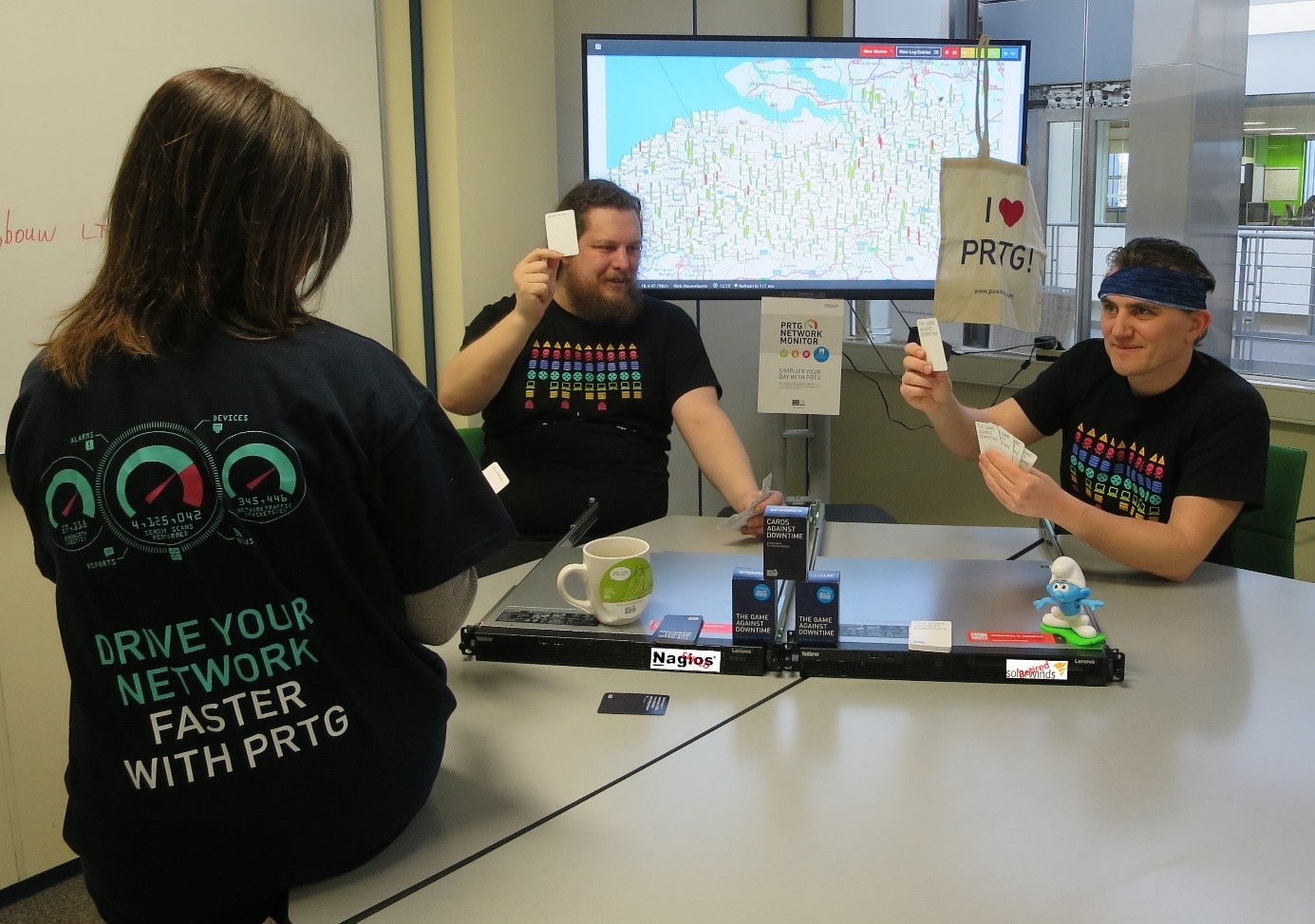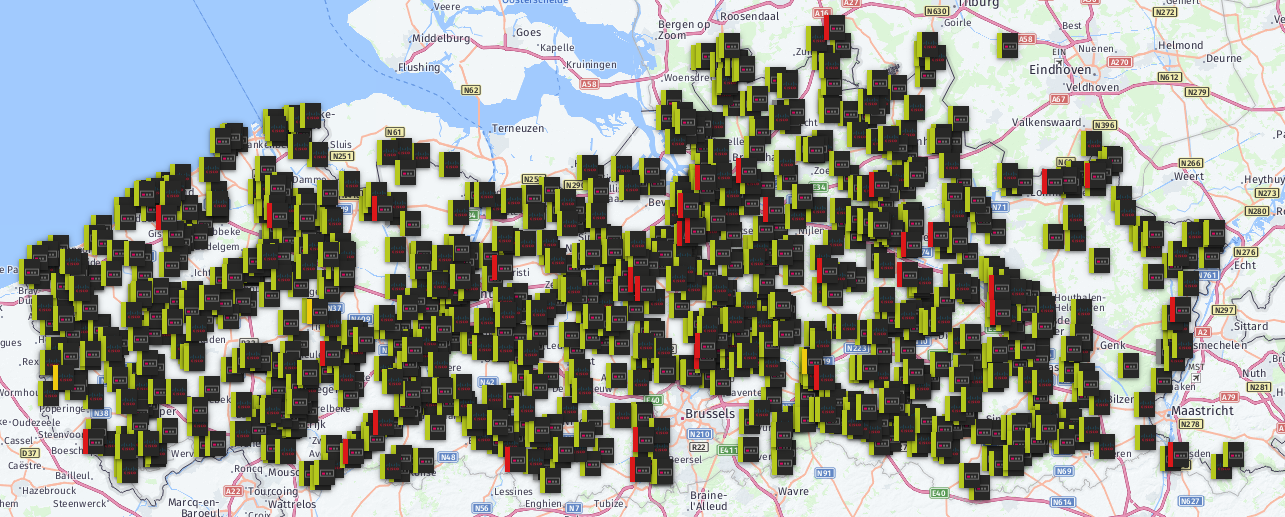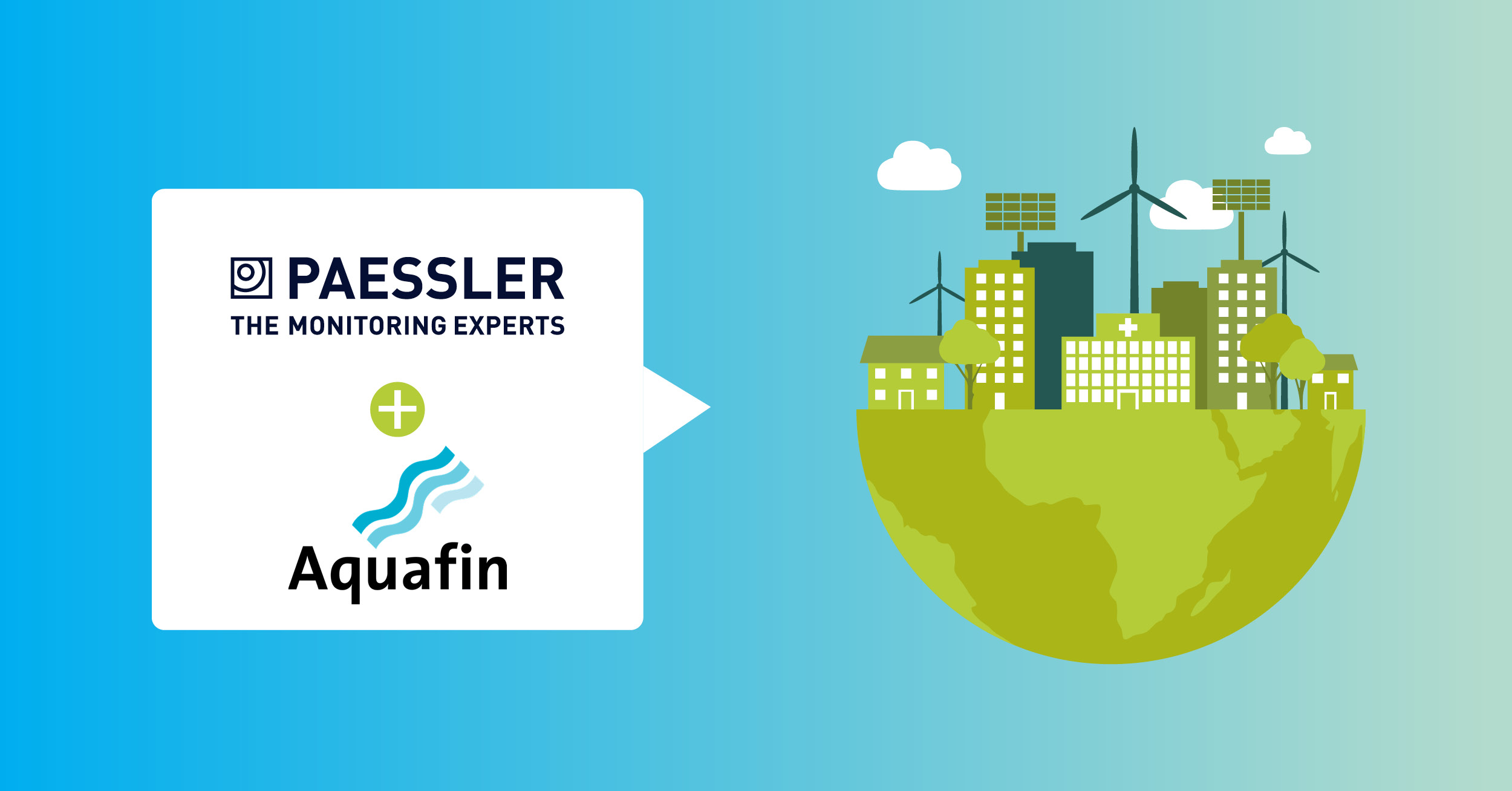Besides the goal of providing our users with reliable uptime and a full overview of their IT, OT and IoT systems, we at Paessler have made it our mission to reduce resource consumption together with our customers. Certain companies have already shown through great use cases not only in how they use PRTG to monitor their sometimes very complex systems, but also how they manage to fulfill this particular purpose and reduce their resource consumption.
Here is the second use case of this series. Enjoy!
Keeping an overview within a complex infrastructure
Aquafin is currently monitoring around 600 locations, and this will rise to over 2,000 in the coming years. The team‘s biggest challenge is: knowing exactly what is happening in the server park and the networks. Nick Nauwelaerts, system architect at Aquafin, explains how in 2015 he started looking for software that monitors all internal processes:
“I was looking for a scalable monitoring tool. A solution that monitors both an extensive server park and an even

more extensive network while remaining well-organized. It was also important that I could integrate specialized tools with proper user management. PRTG was one of the few packages that met these requirements. For example, direct integration with MS Active Directory and this at group, device and sensor level with inheritance can be found in few products.”
iAbout Aquafin Aquafin purifies domestic waste water and is responsible for the development of sewer systems on behalf of the Flemish Region. Every day, five hundred operators work at more than three hundred treatment plants so that clean water can return to nature. With the help of data, analyses and reporting, Aquafin not only monitors the quality of the water, but helps the company prevent dry soil and limit the repercussions of heavy showers. The 30-person Aquafin IT team ensures that the water purification company keeps running as efficiently as possible. They provide all employees with the necessary working tools and keep the historical data of all installations. In addition, they are responsible for the alarm system of the nearly 2,000 pumping stations and 318 sewage treatment plants, so that mechanical problems are quickly discovered.

Prevent unnecessary interventions
Aquafin started with an XL1 license and an additional license was added after a few years. Aquafin now uses more than 30,000 sensors to monitor all remote installations. Nick explains: „With ‘Geo Maps’ (see image), we can visualize the geographic information of all objects and see at once if everything is working properly. PRTG monitors the quality of all network connections, preventing unnecessary interventions. For example, we have a relatively large number of mobile connections and can now properly estimate whether we should replace a router, switch to a fixed connection, or whether it is time for an antenna to be re-oriented.”
Aquafin also monitors all critical internal processes with PRTG. Nick adds: “All overflows (untreated waste water that is discharged into the watercourses) are reported to the Flemish Environmental Society. If it concerns a discharge into a sensitive area, we must legally report this within 15 minutes. PRTG monitors all process steps of the report and gives us the assurance that this process is running correctly. ”

Tailor-made sensors
PRTG supplies a large number of standard sensors, but it is also possible to adjust sensors as needed. Nick makes grateful use of this option. A selection from the Aquafin collection:
SNMP
With SNMP sensors, the team monitors, among other things, the 3G and 4G routers and the signal strength and temperature of the mobile routers of the pumping stations.
REST
Internal applications with microservices as backend have “http rest” sensors to monitor their availability & performance.
HTTP transaction
The team offers applications to end users via an internal portal. For each application they use an “HTTP transaction” sensor to go through all the steps that the end user goes through, so that they know for sure whether the application works. The status of the applications is visible as a folder on a dashboard on the internal portal.
Traffic sensor
For the most important remote locations, they have an overview page with the percentage of bandwidth usage, so that users do not have to call the help desk if “things are going slowly.” Users can see for themselves what is going on, which saves everyone a lot of time.
Sensor factory
The „sensor factory” sensor is mainly used by the team to offer an application dashboard with redundant servers. For exchange / e-mail, for example, Aquafin has redundant load-balanced servers. For IT staff, the status of each service is important, but for the end user it is only relevant whether the service is up or down. Sensor factory sensors calculate the status of a service and display it on a dashboard.
Fast support
“The support is strong and fast: if there is anything, the contact is smooth and focused via the PRTG interface or by e-mail. The wide variety of sensors is a major advantage of PRTG. The depth is therefore sometimes slightly less than vendor-specific monitoring tools, but the active development of the product is offset by that. New sensors and functionalities are regularly added, and users can create feature requests via the Paessler website.”
Finally: the technical specs
Number of sensors?
30,000 spread over 2 core servers
Installed on?
2 core servers, 5 remote probes on separate servers for load balancing
What do they monitor?
LAN, WAN, websites, cloud services, virtualized environments, servers, switches, routers and applications
How exactly?
With both standard and custom sensors, the API and mini probes
This is how PRTG makes monitoring easy for you
You can either use PRTG Network Monitor or you can choose the Paessler PRTG Enterprise Monitor. The table below shows you how the two products differ:
|
PRTG XL |
PRTG Enterprise Monitor |
|---|---|
|
The PRTG XL license is a perpetual license. It limits the number of PRTG servers but not the number of sensors.
|
PRTG Enterprise Monitor is subscription-based.
|
😍 Do you have a story to tell...?
... of how you and your company manage to save resources with PRTG? This makes our hearts beat faster. Please contact us and tell us everything! Simply click the banner below or use: resource.reduction@paessler.com
 Published by
Published by 














